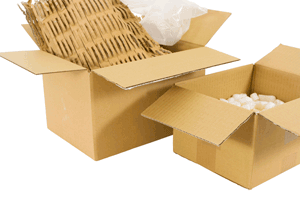 Online retailers were dealt a blow this winter when UPS and FedEx added dimensional weight pricing to calculate shipping costs for parcels under 3 cubic feet. DIM pricing is expected to affect about 30% of packages handled by the major carriers, with shipping rates expected to rise up to 25% on some packages. Even though DIM pricing is a needed push for efficiency, retailers are concerned for cost and product safety.
Online retailers were dealt a blow this winter when UPS and FedEx added dimensional weight pricing to calculate shipping costs for parcels under 3 cubic feet. DIM pricing is expected to affect about 30% of packages handled by the major carriers, with shipping rates expected to rise up to 25% on some packages. Even though DIM pricing is a needed push for efficiency, retailers are concerned for cost and product safety.
Instead of panicking, retailers can embrace dimensional weight pricing as motivation to upgrade their operations, making them more efficient and eco-friendly. Here is a step-by-step guide I recently shared with retailers at IRCE to evaluate current processes and make the most of dimensional pricing.
Step One: Take Stock of Inventory and Current Practices
When a fashion retail client of Dotcom Distribution saw shipping rates rise 13%, we had to change how we packed their boxes. At the same time, we didn’t want to sacrifice product safety or the unboxing experience. To solve the problem, we used poly bags packed in an attractive fashion, eliminating the extra air that comes with boxes.
Before we made such a significant change, we worked with the retailer to determine where their shipping and logistics operations stood. Were they using the correct box sizes? Did their merchandise require boxes at all? Large, rigid boxes may be preferred for easy handling and safety on automated packaging systems, but they often leave a lot of wasted space.
Determine how many packages would get “dimmed” if shipped as is. Take stock of which boxes wreak havoc on your budget and set a percentage limit on how many dimmed boxes you can accommodate. This sets a realistic goal for packaging changes so you can begin to adjust your business in other areas to accommodate the extra expense.
Step Two: Evaluate Carrier Relationships
With our fashion retail client, it was crucial to keep shipping costs low. Their customers expect flat-rate shipping, so they couldn’t afford to change a central part of their brand. Using our ties to both major and smaller carriers, we built a supply and delivery chain that maintains their cheap shipping without sacrificing the customer experience or a major chunk of revenue.
Ultimately, carriers have the final say on how they charge clients for shipping. So it should be no surprise that retailers and 3PLs with stronger carrier relationships will have more pull to change their divisor and lower DIM costs. DIM weight is calculated by dividing a package’s cubic volume by 166; the higher the number, the lower the cost.
You may not be able to completely alter your carrier relationship, but you can see what other options exist. Evaluate your contract and use this time to negotiate a higher divisor, bulk shipping discount or other arrangement that can benefit both parties.
If you can’t come to a mutually beneficial agreement, remain carrier agnostic. The ideal carrier for your business will help your business thrive. Find the best deal and bolster the relationship. If you can’t get the pull you want, you can also partner with a 3PL. Our clients know that we can leverage an extended network to make a plan that will work for them at the lowest possible cost.
Step Three: Consider the Customer Experience
The unboxing experience is central for how customers view our fashion retailer’s brand. For instance, our client used to package lingerie in rigid boxes filled with colorful tissue paper for a luxurious feel. In consideration of DIM pricing, we made the switch to poly bags because they could better form to the product. While bags were still packed to be attractive and branded, we were able to save space and money.
Though it’s important to minimize profit loss due to DIM pricing, ecommerce retailers should not forget the customer experience in the process. Without happy customers to serve, it doesn’t matter how efficient your packaging is.
Identify what is most important to your customers as they unpack an order. Is it the external packaging or the inside? Do they care about personalization? Once you identify their priorities, do not change these aspects to improve efficiency.
Though retailers will face challenges as they adapt to DIM, it’s an opportunity to optimize operations and become a more efficient, eco-friendly retailer. As commerce brands assess their vulnerability to DIM, in the process strengthening carrier relationships with help from their 3PL and focusing on the customer experience, they will effectively upgrade their operations and reap benefits in terms of efficiency gains.
Maria Haggerty is CEO of Dotcom Distribution
